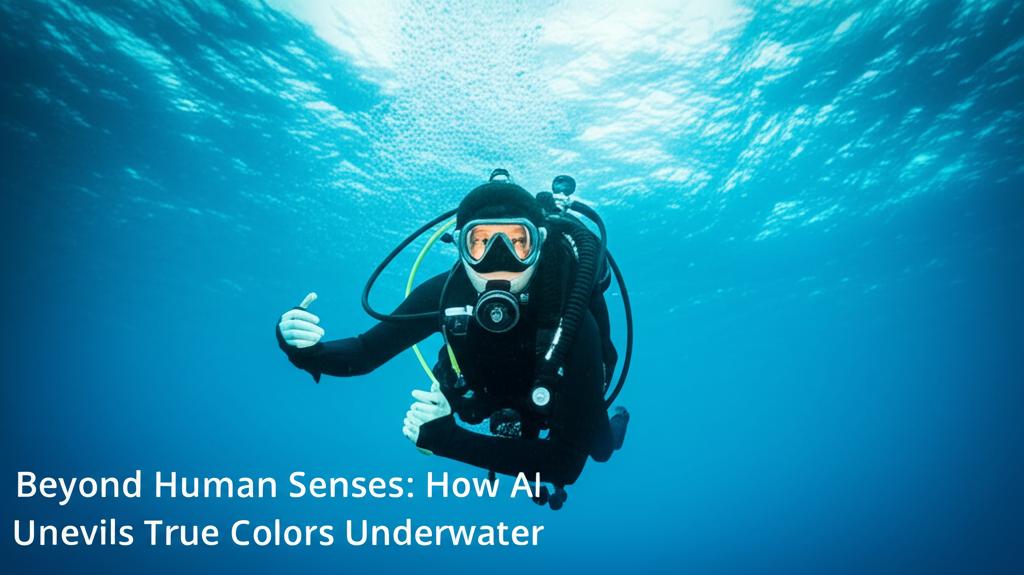The underwater world, a realm of immense beauty and mystery, has long posed a challenge for true color perception. Light behaves differently in water; it gets absorbed and scattered, causing images to appear washed out, predominantly in hues of blue and green. This distortion veils the vibrant reality of submerged ecosystems. However, Artificial Intelligence (AI) is now parting this aquatic veil, revolutionizing how we see and understand the hidden colors of the deep.
The core of the problem lies in how water filters sunlight. Longer wavelengths of light, like reds and oranges, are absorbed quickly with depth, while shorter wavelengths, such as blues and violets, penetrate further. This uneven attenuation, coupled with suspended particles that scatter light, results in a loss of color and contrast in underwater imagery. For years, photographers and scientists have grappled with these limitations, relying on color charts, filters, and manual post-processing techniques with varying degrees of success.
Enter AI, particularly deep learning algorithms. These sophisticated systems are trained on vast datasets of underwater images, learning the complex relationships between the distorted images and their true color counterparts. By analyzing countless examples, AI models can effectively identify and compensate for the color shifts and haziness introduced by the water column.
Several AI-powered techniques are making significant strides. Convolutional Neural Networks (CNNs) and Generative Adversarial Networks (GANs) are at the forefront of this technological wave. CNNs excel at learning intricate patterns from image data, enabling them to correct color distortions and enhance details. GANs, on the other hand, involve two neural networks—a generator and a discriminator—that work together to produce highly realistic, color-corrected images. Some approaches even integrate the physics of light propagation in water into their models, considering factors like light attenuation and backscatter to achieve more physically accurate color restoration.
One notable algorithm, known as Sea-Thru, demonstrated the power of AI in removing the visual distortion caused by water pixel by pixel. It analyzes images by factoring in the physics of light absorption and scattering, effectively reversing the distortion to reveal lost colors with remarkable accuracy. More recent developments, like SeaSplat, have built upon such principles, not only correcting color but also generating 3D virtual underwater environments from multiple images, allowing for immersive exploration of accurately colored marine scenes.
These AI-driven advancements offer more than just aesthetically pleasing pictures. For marine biologists, accurate color representation is crucial for species identification, assessing coral reef health, and monitoring ecological changes. AI's ability to reveal true colors can significantly improve the efficiency and accuracy of these tasks, leading to a better understanding of underwater ecosystems. Furthermore, enhanced underwater imaging benefits fields like underwater archaeology, infrastructure inspection, and even autonomous underwater vehicle (AUV) navigation.
While the progress is impressive, challenges remain. Developing AI models that can generalize across diverse underwater conditions, from clear tropical waters to murky coastal areas, is an ongoing area of research. Handling varying levels of turbidity, illumination, and the sheer diversity of underwater scenes requires robust and adaptable algorithms. Researchers are continually working on improving model efficiency, reducing computational demands, and expanding the datasets used for training to address these complexities.
The journey of AI in underwater imaging is unlocking a new era of discovery. By transcending the limitations of human vision and traditional photography, AI is painting a more accurate and vibrant picture of the world beneath the waves, fostering a deeper appreciation and understanding of this critical part of our planet.

